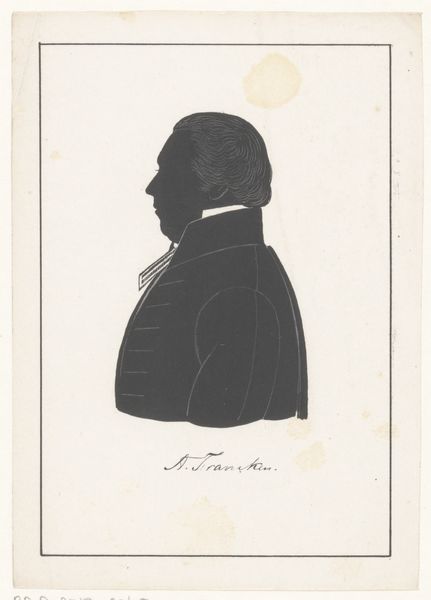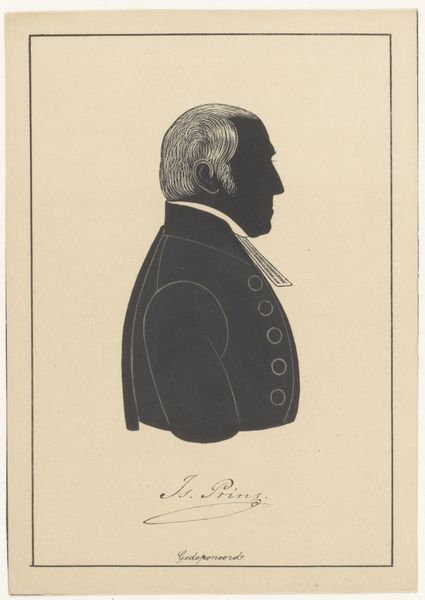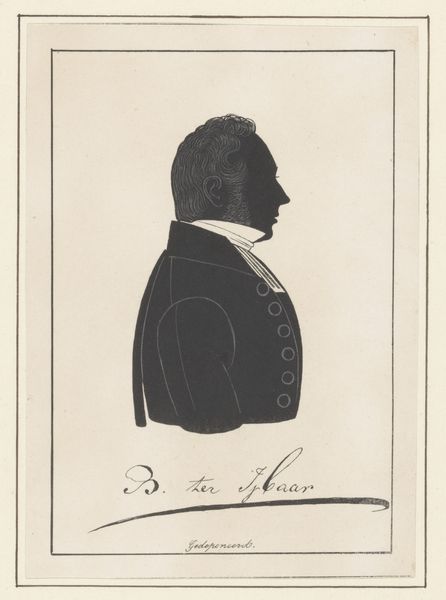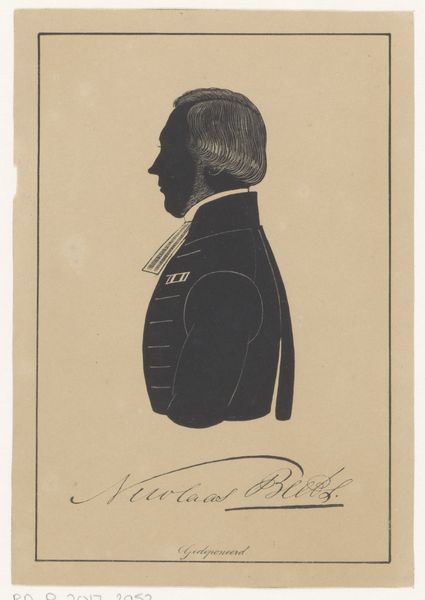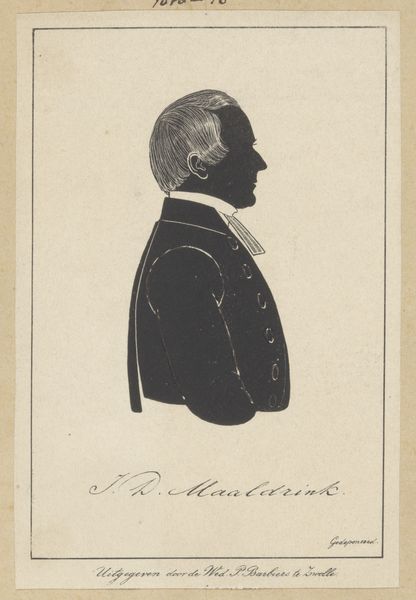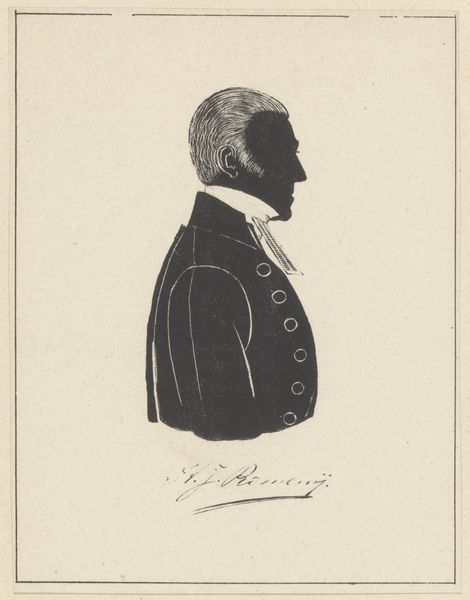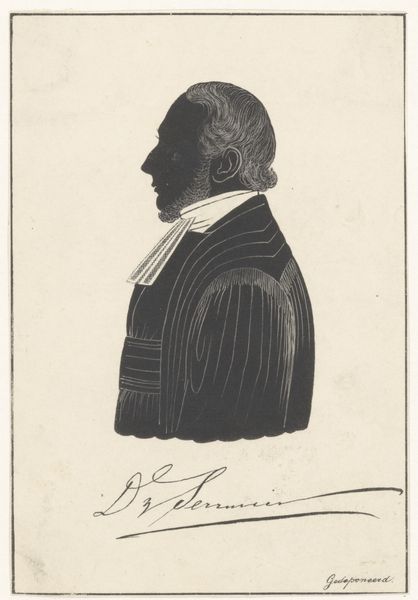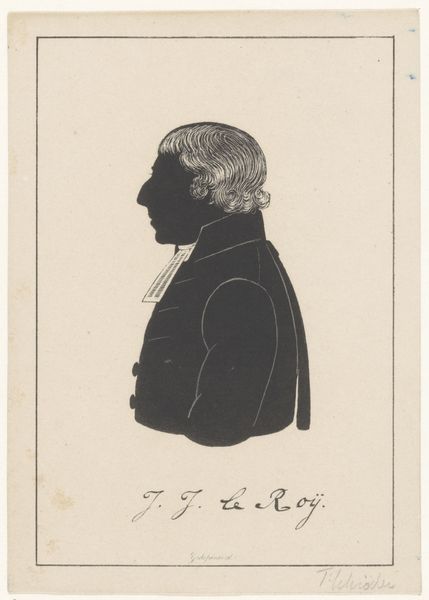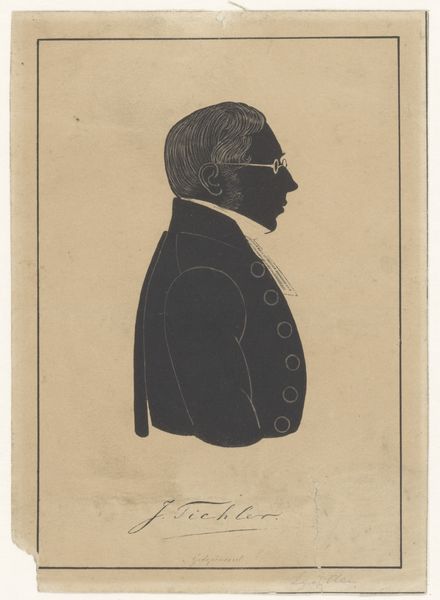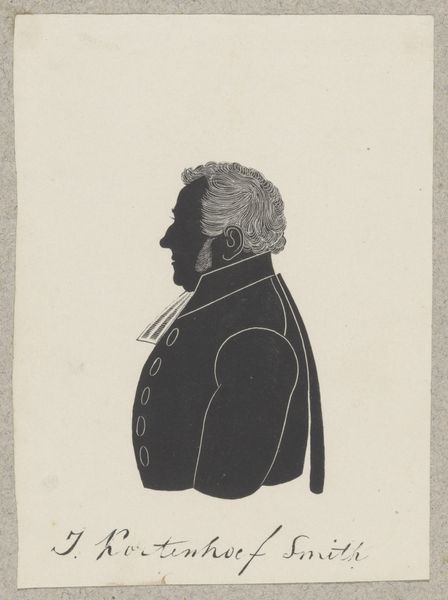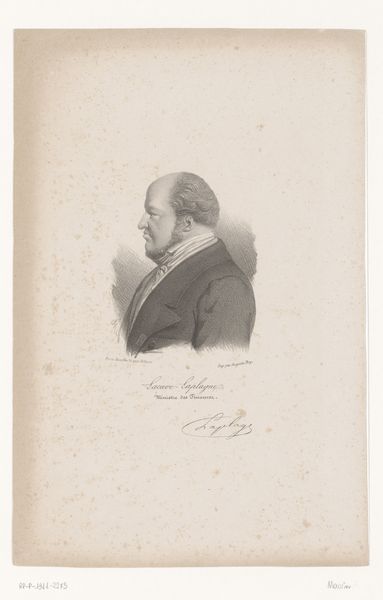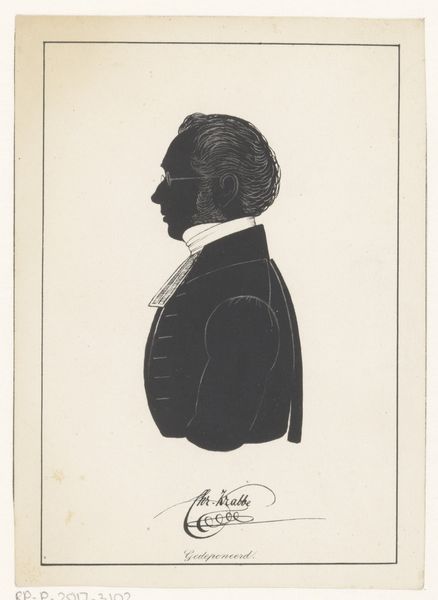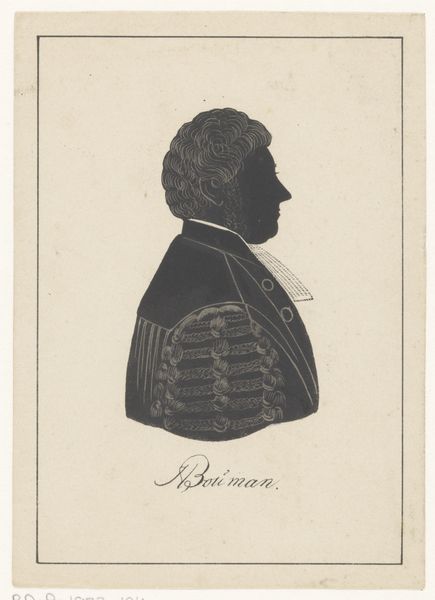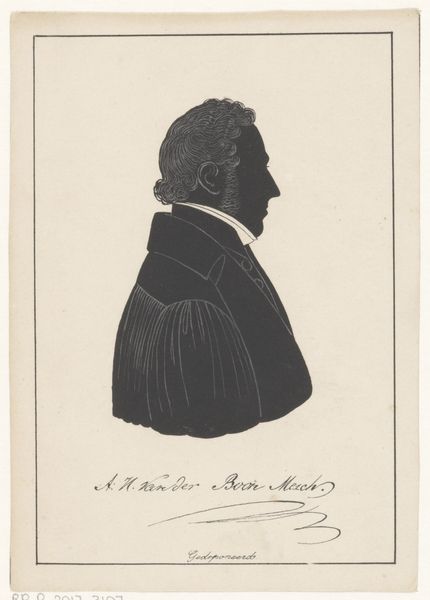
drawing
#
portrait
#
drawing
#
form
#
romanticism
#
line
Dimensions: height 153 mm, width 106 mm
Copyright: Rijks Museum: Open Domain
Pieter Barbiers IV created this silhouette portrait of Heiliger Jacob Wunder using cut paper. It’s a striking image that speaks to the rigid social structures and the visual culture of the 19th century. During this period, silhouette portraits were a popular and accessible form of portraiture, particularly among the middle class. This mode of representation allowed for a certain democratization of image-making, offering individuals a way to participate in visual culture, regardless of social standing. The black silhouette against a light background is stark. It reduces a person to their most basic outline and invites us to consider how identity can be both revealed and concealed through such representation. Wunder's stern profile and formal attire speak to the values of the time, while reminding us of the power dynamics inherent in portraiture. It is a dance between presence and absence, identity and anonymity.
Comments
No comments
Be the first to comment and join the conversation on the ultimate creative platform.
